As winter hits, Iain Treloar guides you through the gear to keep your extremities functioning.
When the chill of winter bites, it’s your extremities that feel it first—and worst. On the bike, cold lifeless fingers can dangerously hamper your ability to brake or control your bike; numbness in your feet is uncomfortable and can spread up your legs. These are not pleasing scenarios for even the most masochistic of riders, creating a market for a vast variety of shoe covers and full-fingered gloves to solve the issue.
It is, however, reductive to describe shoe covers as simply shoe covers, and gloves as simply gloves. Rather, most brands offer numerous products, each fine-tuned for distinct weather conditions and temperatures; a shoe-cover for a cold but clear-skied zero degrees won’t be the best choice for torrential rain and 10 degrees. Conversely, take windstopping and waterproofing treatments on their merits; a pair of gloves that are warm when stationary will still give you cold hands if they let the air through in motion, and a windstopping glove may still lead to chill if your hands are wet.
Here’s an overview of standouts on the market and what they’ll work best for, so you can choose the best items for your riding.
Gloves
Rapha Pro Team Softshell gloves
$110 /rapha.cc
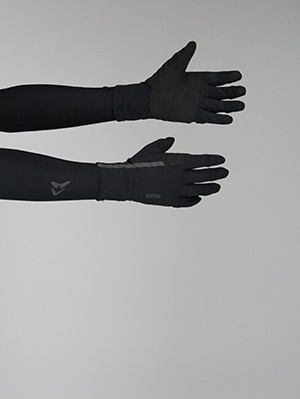
The British brand’s top-tier of clothing, Pro Team, strikes an interesting path ; it’s targeted toward fast riding and performance at the racier end of the spectrum, which means that it foregoes some creature comforts to get the most streamlined product possible for the purpose. The Pro Team Softshell gloves are an adaptable design that suits a broad range of conditions well without truly specialising in any one; these also come in an equally high-performing shoe cover, which works in almost exactly the same way.
The Softshell gloves are windproof and water resistant, with a thin, almost minimalistic construction that’s designed for dexterity, fast riding and ultimate control. They go almost completely unnoticed once worn, with fingers non-bulky enough that I could typed this paragraph in them. The fingertips are also smartphone compatible, unless wet.
Padding of the gloves is minimal, again aiding control, but there’s a run of stitching across the heel of the thumb creating a pressure point in certain hand positions. Our test sample also developed some loose threads on the palm after a month’s use, marring an otherwise happy time with a versatile and likeable product.
Best for… mixed conditions and high speeds.
Long term update: Stitching on one hand has continued to deteriorate (although, Rapha’s warranty/repair service is the best in the business, so not a dealbreaker). The dexterous, barely-there feel of them continues to be amazing. They’re a glove that I continue to reach for down to about 5 degrees. They’re not effective at freezing, even with a merino liner.
Roeckl Riesa (3103-780)
$119.99 / velovita.net.au
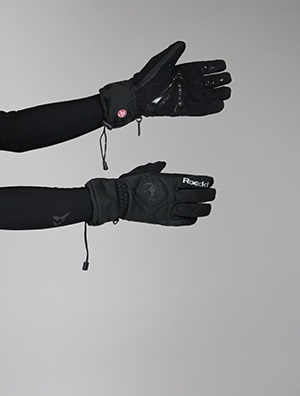
Roeckl is a German glove specialist, with a vast range across a range of activities. In winter cycling gloves alone, they offer an intimidating 33 models; thankfully for Australian consumers already overwhelmed with choice, there are only two cycling models imported here. The Riesa (more likely identified in bike shops by its considerably less catchy code-number) is a genuine, Gore-branded, serious windstopper.
The Riesa features long cuffs, with a drawstring at the wrist providing snug closure against the wind. It feels like it’s been designed by glove specialists; there are numerous little details making a big difference (no stitching at the tip of the fingers, for one). Features like fleecy panels on the thumb for nose- and snot-wiping duties are a nice touch.
That said, they aren’t the most adaptable of gloves. They were the bulkiest on the hand of our tested gloves, affording limited dexterity of the fingers. They also had a somewhat utilitarian rather than attractive appearance.
However, if cold fingers are your pet peeve, there’s much to recommend these. What they lack in versatility they more than make up for in cosiness; I found them almost too warm for all but the coldest Melbourne mornings, but absolutely outstanding when the mercury dropped.
Best for… cold, clear mornings.
Long term update: The quality of construction, soft interior and long cosy cuffs are still greatly appreciated. The bulkiness on the hand does affect their function on the bike, hampering brake feel and making shifting slightly clumsy, so they don’t get a great deal of use.
Castelli Diluvio
$49.99 / degrandi.com.au
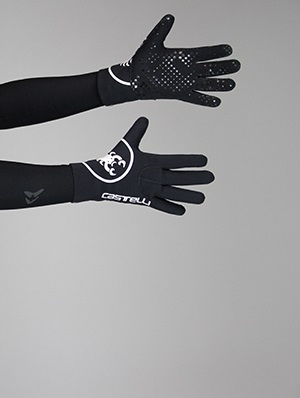
Many of the Italian brand Castelli’s products are advertised to suit within a particular temperature range. They reckon the Diluvio is suited from 14-24 degrees. I reckon these figures are over by about eight degrees; I found them to work excellently in colder conditions and to provide outstanding insulation. The gloves are completely constructed of wetsuit-like 3mm neoprene; functionally, they trap moisture and heat it to body temperature. This is a pretty foreign feeling which I didn’t like much to begin with, but by the end of the first ride I was a convert. On the coldest mornings your fingers may get cold, but they get warmer as the ride goes on rather than less.
The Diluvio features nice high cuffs to eliminate drafts at the wrist, with a snug fit—we tested the smaller of the two sizes they’re available in and they were tight but adequately stretchy for it not to be an issue, allowing good finger dexterity. They’re also appealing, if a little bold, in appearance.
Their greatest asset is also their greatest weakness. They’re completely non-breathable, which is fundamental to their function, but they do quickly feel clammy (but warm). Owing to this clamminess, they become damp and smelly and need turning inside out after each ride to air. They’re also quite slow to dry. But they are astonishingly successful at what they do, and I’d happily excuse their flaws. The real surprise package of this test.
Best for… wet and still conditions.
Long term update: The Diluvio’s positive impression continued to grow, and they ended up being hands down my favourite of the three tested. I stupidly lost one and there’s not a day that goes by that I don’t miss it. Downsides: they take a bit of time to get on, as you need to flip them inside out and the fingers can prove resistant to this.
Shoe covers
Bellwether Coldfront
$69.99 / velovita.net.au
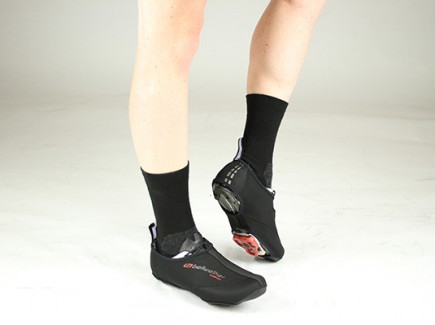
Bellwether have a prominent fair-weather, cold-temperature range called ‘Coldfront’. We’ve previously tested one of their jackets from this range and found it to be extremely cosy, whilst still breathing well. These shoe-covers follow in this tradition. This is not to say that they aren’t a bit of a tricky sell: cold but fair-weather clothing is not as easily defined as rain-gear, although the niche that they fill is equally valuable.
The Coldfront we tested is a shoe cover rather than a full bootie; it doesn’t cover the ankle but keeps the foot warm. Visually this makes it a bit unusual compared to what we’re used to in cycling shoe covers, but the thinking behind it makes sense—if you’re wearing these, you’re most likely going to be wearing tights or leg warmers.
There’s no pretense at all-weather functionality—the Coldfront is a kind of soft shell fabric that will ward off light showers but get swamped in a torrential downpour. For their stated purpose, they’re outstanding; we tested down to about 5 degrees with no toe numbness, and would feel confident pushing that down to freezing. In delivering on their claims, these were spot on.
Best for… cold, dry conditions.
Long term update: Whilst their lack of water resistance is a potential turn-off, over an extended period it was remarkable how much love the Coldfronts got. In a shorter length, they are easy to leave on the shoes ride after ride, and actually work beautifully for the majority of the winter months. Very impressive, even at -2 degrees.
BBB Speedflex
$69.99 / bbbparts.com.au
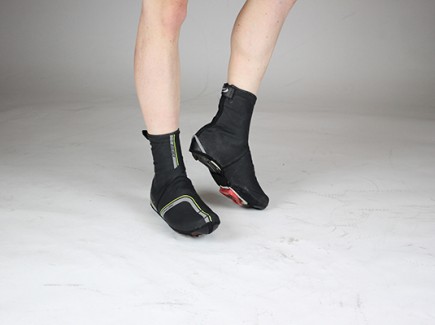
BBB have a broad and well-regarded range of winter shoe covers and gloves. The SpeedFlex is listed as one of their most waterproof offerings, offering excellent waterproofing, above average windstopping and acceptable warmth.
Some shoe covers feel like they’ll easily tear when being walked on, but the Speedflex is reinforced with Kevlar at the toe and the heel, with thick runs of stitching throughout. The design is accented with reflective detailing to increase visibility at most angles.
The way that they fit around the shoes is snug, but I think it’s worth trying a couple of different sizes to ensure the snuggest fit to your shoes. I wear a size 43 road shoe, and the 41/42 Speedflex was pretty spot on. The extra wiggle room in the fit would allow room for bulkier mountain bike shoes.
The SpeedFlex are constructed of a polyurethane outer with fleece-lined inner; seams are taped throughout, and the closure around the ankle can be cinched in for a tight fit. The weakness of any waterproof shoe cover is at the leg, and whilst the body of the SpeedFlex was watertight, there was some ingress above the ankle. No shoe cover is a perfect barrier to water ingress this way—in a torrential downpour I ended up with wet feet after about half an hour—but the SpeedFlex is better than most, built to last, good looking and sharply-priced.
Best for… those really foul days.
Long term update: The shorter length of these shoe covers proved a bit annoying if you use long (6″ +) cycling socks. The durability of these shoe covers is unquestionable, and they’re an attractive option.
Louis Garneau Pro-Lite
$59.95 / monzaimports.com.au
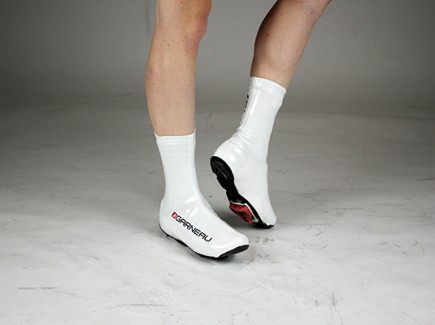
In the pursuit of aerodynamic advantage, shoes account for a surprising amount of drag. As such, it’s not uncommon for road riders with an eye on efficiency to wear shoe covers looking something like these in a bid to save some vital seconds. Usually, they’re designed to smooth the passage of air and not much more. The Louis Garneau Pro-Lite looks not unlike these, but is surprisingly functional as well.
Rather than just being a flimsy lycra sock, the Pro-Lite has a glossy polyurethane coating over its entire surface. It’s a very tight fit, so much so that you have to put the shoe cover on first, then your shoe, before pulling it over the foot. It’s also snug around the ankle (or more accurately, lower calf) providing an acceptable barrier to water running down the leg. Seams throughout are taped, but their minimal construction raises questions about whether they can be truly completely waterproof. They fare superbly as windstoppers, filling the niche from 10–20 degrees beautifully.
White seems like a terrible choice, but the glossy exterior means they easily wipe clean. I have some concerns about their long-term durability; they feel considerably less robust than the other shoe covers we tested, and there was minor puckering of the fabric from the inside when it met abrasive surfaces like Velcro. But they look extremely ‘pro’, are a lot more functional than the vast majority of aero shoe covers and kill a couple of birds with one stone—if not with knock-out blows.
Best for… aerodynamic all-rounders.
Long term update: The polyurethane has started to show some signs of wear, but the shoe covers overall are more impressive than initial impressions suggested. Wind resistance is good, and the tight seal around the leg is quite effective in rain. They do eventually allow your feet to get wet, after about an hour in mixed conditions.
Ride On content is editorially independent, but is supported financially by members of Bicycle Network. If you enjoy our articles and want to support the future publication of high-quality content, please consider helping out by becoming a member.

